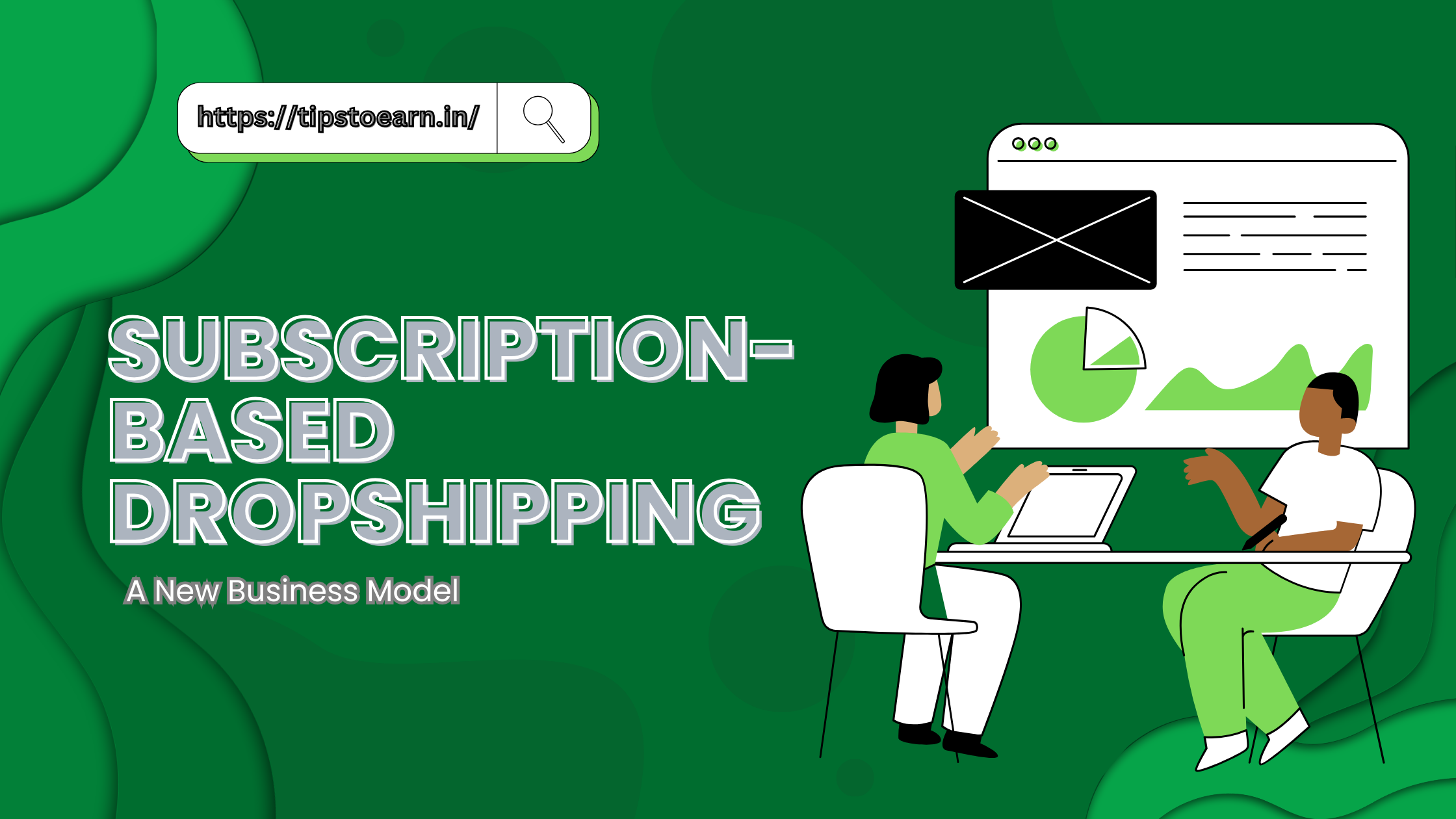In the world of ecommerce, a new model is emerging. It combines dropshipping with the steady income of subscriptions. This model offers a steady income and lets us tailor products to our customers. It builds strong relationships and loyalty.
By using automated order fulfillment, this model is changing online shopping. It’s making retail more efficient and customer-focused.
Key Takeaways

- Subscription-based dropshipping combines the flexibility of dropshipping with the reliability of recurring revenue.
- It provides a consistent cash flow, allowing businesses to plan and invest with confidence.
- Personalized product curation and subscription box services enhance customer engagement and loyalty.
- Automated order fulfillment streamlines operations, reducing overhead and improving efficiency.
- This business model taps into the growing popularity of subscription-based ecommerce models.
Embracing the Recurring Revenue Model
Subscription-based dropshipping offers a key advantage: a recurring revenue model. It provides a steady flow of income through regular product deliveries. This stability helps businesses plan better and make more informed decisions.
Consistent Cash Flow and Customer Retention
This model keeps customers coming back. Subscribers stay because they enjoy the products they get. This steady income lets businesses grow with confidence.
Personalized Product Curation for Subscribers
Each box is tailored to what customers like. This builds a strong bond between the brand and its audience. It also lets businesses keep improving their offerings.
| Key Benefits of Subscription-Based Dropshipping | Description |
|---|---|
| Recurring Revenue Model | Consistent and predictable cash flow, financial stability, and strategic decision-making |
| Customer Retention | Subscribers are incentivized to maintain their subscriptions for ongoing product deliveries |
| Personalized Product Curation | Tailoring product selections to the specific needs and preferences of the target audience |
Subscription-based dropshipping offers many benefits. It helps businesses succeed in the competitive world of subscription commerce and subscription box services.
Subscription-Based Dropshipping: A Game-Changer
The rise of subscription-based dropshipping is changing ecommerce. It combines automated order fulfillment with direct sales to customers. This lets entrepreneurs grow their businesses better and focus on great customer service.
With this model, businesses get a steady income and closer ties with customers. They don’t have to worry about complex logistics or big inventories. Instead, they can pick the best products, create exciting ads, and build a loyal fan base. This makes their work easier, cuts costs, and helps them grow and make more money over time.
The main benefits of subscription-based dropshipping are:
- Automated order fulfillment that means no need to manage stock
- Direct sales to customers for a more personal experience
- Regular ecommerce income for a steady cash flow
- A business model that grows easily without being held back by logistics
By using this new business model, entrepreneurs can focus on finding the best products, making great ads, and connecting with their subscribers. This leads to a business that is efficient, profitable, and ready for the future in the fast-changing digital world.

“Subscription-based dropshipping represents a paradigm shift in the way we approach ecommerce. It’s a game-changer that empowers entrepreneurs to scale their businesses more efficiently and deliver exceptional customer experiences.”
The Rise of Subscription-Based Dropshipping: A Data-Driven Approach
Subscription-based dropshipping is rapidly gaining traction in the ecommerce world, and the numbers back this up. Over the last few years, subscription services across industries have skyrocketed, with more customers seeking curated, personalized product deliveries. This trend extends to dropshipping, where subscription-based models offer predictability and long-term customer relationships.
Growth in Subscription-Based Ecommerce
In a study conducted in 2023, the global subscription box market was valued at over $23 billion. Forecasts predict that this figure will reach $47 billion by 2027, doubling in size. The convenience, personalization, and cost-saving aspects have attracted millions of customers to sign up for subscription services.
Subscription-Based Ecommerce Growth (2023-2027)
| Year | Market Value (in $ billions) | Growth Percentage |
|---|---|---|
| 2023 | 23 | – |
| 2024 | 28 | 21.7% |
| 2025 | 34 | 17.6% |
| 2026 | 40 | 14.7% |
| 2027 | 47 | 15.0% |
This growth trajectory signifies an immense opportunity for ecommerce businesses to leverage subscription-based dropshipping. With automated order fulfillment and recurring revenue, entrepreneurs are better positioned to capture market share in this booming industry.
Visualizing Subscription Success: Predictable Revenue Trends
The most appealing feature of subscription-based dropshipping (shopify) is the predictability of its revenue model. Unlike traditional dropshipping, which can be seasonal or unpredictable, subscription businesses enjoy steady income streams due to the recurring nature of the business.
On the other hand, the subscription-based dropshipping revenue line shows a steady upward trend. Each month sees incremental growth as new subscribers sign up and existing subscribers continue to make monthly payments.
- Traditional Dropshipping Revenue: Highly volatile, dependent on short-term marketing campaigns and seasonality.
- Subscription-Based Dropshipping Revenue: Predictable, steady growth with minimal dips due to continuous recurring payments from loyal subscribers.
Key Metrics for Subscription-Based Dropshipping
To measure the success of a subscription-based dropshipping business, entrepreneurs need to focus on certain key performance indicators (KPIs). These KPIs will help ensure that the business remains scalable and sustainable over time.
| Metric | Description |
|---|---|
| Customer Lifetime Value (CLV) | The total revenue a customer is expected to generate throughout their subscription period. |
| Churn Rate | The percentage of subscribers who cancel their subscription in a given period. |
| Average Revenue per User (ARPU) | The average monthly income generated per subscriber. |
| Retention Rate | The percentage of customers who continue their subscription after a set period. |
| CAC (Customer Acquisition Cost) | The cost associated with acquiring a new customer through marketing and sales efforts. |
By tracking these metrics, business owners can gain insights into how well their subscription-based model is performing and where improvements can be made to maximize revenue and customer retention.
Challenges in Subscription-Based Dropshipping

While subscription-based dropshipping offers many benefits, it’s not without its challenges. To maximize success, businesses must address a few critical factors:
- High Customer Expectations: Subscribers expect consistent quality and timely delivery, making it essential for businesses to maintain high standards.
- Managing Churn: Customer churn can significantly impact revenue. Offering personalized product curation and regular engagement through newsletters, surveys, or loyalty programs can help retain customers.
- Supplier Reliability: As in any dropshipping business, the reliability of suppliers plays a crucial role in meeting delivery deadlines and maintaining product quality.
- Product Curation: The right products are key to the success of subscription models. Constantly curating and updating the offerings helps keep the service fresh and exciting for customers.
Automating Order Fulfillment: Efficiency Meets Scalability
A significant advantage of the subscription-based dropshipping model is its reliance on automated order fulfillment systems. These systems drastically reduce the manual labor associated with order processing and ensure that products reach customers on time without requiring businesses to hold inventory.
Automation tools can track inventory levels, automatically send orders to suppliers, and manage subscription renewals. This level of automation allows businesses to scale quickly while keeping operational costs low. Entrepreneurs can focus on curating their subscription boxes and building customer relationships while the technology handles the back-end logistics.
Conclusion
As the ecommerce landscape continues to evolve, subscription-based dropshipping presents a new and lucrative opportunity for businesses. With its combination of automated fulfillment, recurring revenue, and personalized customer experiences, this model allows entrepreneurs to build stronger, more sustainable businesses.
By embracing the subscription-based dropshipping model, businesses can capitalize on the booming subscription economy, provide consistent value to customers, and enjoy a steady cash flow. However, like any business model, it requires careful planning, supplier vetting, and ongoing customer engagement to succeed in the long run.
For those looking to diversify their revenue streams and gain a competitive edge, subscription-based dropshipping is a powerful strategy to consider. With the right tools and a customer-focused approach, the potential for growth is significant.
In summary, subscription-based dropshipping combines the best of both worlds: flexible dropshipping and reliable subscriptions. With predictable revenue, low upfront investment, and high customer retention, this model offers a clear path to success in the ecommerce world.
IF YOU LIKE THIS ARTICLE THEN CLICK HERE TO EXPLORE MORE
